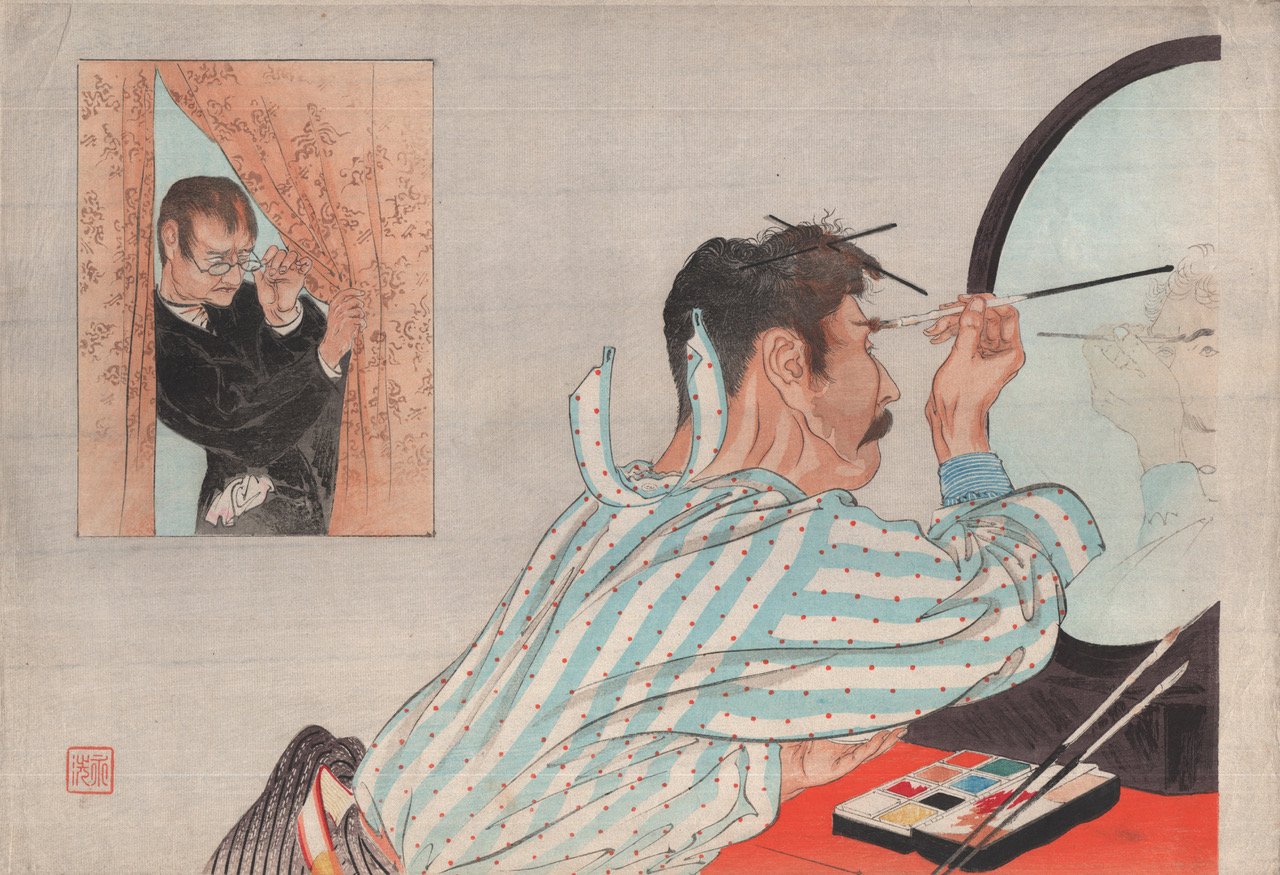Out of the shadows into the frame
Tomioka Eisen, kuchi-e (frontispiece) with artist's seal Shisen, c. 1906, Woodblock print, 23.2 x 31.6 cm, Tirey-van Lohuizen Collection.
Since opening in 2018, Chicago’s Wrightwood 659 museum has presented an eclectic array of exhibitions and programs. It’s newest offering, The First Homosexuals: The Birth of a New Identity, 1869–1939 and curated by Jonathan D. Katz is on view through July 26.
In 1869 the term “homosexual” was first coined. Katz’s exhibition examines how this new concept impacted societal perceptions and artistic representations in the ensuing decades. It also explores the lives of these artists whose works have been overlooked or “straightwashed” by art critics and curators. I got a preview from the curator in a conversation on Zoom as well as seeing the catalogue. *
Seven years in the making, the scope of the exhibition is exhilarating: more than 300 works by more than 125 LGBTQ artists from 40 countries on loan from over 100 museums and collections including the Tate, Musée d’Orsay, the Met and Boston’s Museum of Fine Arts. Even with this reach, the curator told me, “We have some holes. We ran into a lot of problems with India, former Soviet states and of course with Russia itself.”
Essays in the sumptuous catalogue are revelatory and erudite: 22 scholars contextualizing works from Europe, Africa, Australia, Asia and the Americas. The articles are a primer in international queer and gender studies.
The three floors of the museum are replete with heroic nude portraiture and period couture in paintings, drawings, prints, sculptures, films and photography from the late 18th century to the beginning of World War II. Asian erotica is resplendently represented. Colonialism is addressed with figurative illustration of power differentials.
Beauford Delaney, Portrait of James Baldwin, 1944, Pastel on paper, 24 x 18 ¾ inches. Image: Knoxville Museum of Art, 2017 purchase with funds provided by the Rachael Patterson Young Art Acquisition Reserve; © Estate of Beauford Delaney, by permission of Derek L. Spratley, Esquire, Court Appointed Administrator, Courtesy of Michael Rosenfeld Gallery LLC, New York, NY.
Well-known artists are peppered throughout, including Berenice Abbott, Jean Cocteau, Beauford Delaney, Charles Demuth, Marsden Hartley, Harriet Hosmer, John Singer Sargent and Egon Schiele. Just as important, the exhibition introduces many international artists, including lesbians who have historically been overlooked—more than a third of the work was produced by women and artists of color.
I particularly enjoyed the Beyond the Binary section highlighting trans identities. Katz explained: “We felt it was really important at the moment that we were reinforcing the idea of homosexuality to underscore that it was never only about same-sex desire. We wanted to make clear that in many respects, trans and queer have always been with us.”
Sadly, the exhibition will not tour anywhere else in the United States. Katz mentioned, “We are in current negotiations with the Kunstmuseum Basel. It is telling that no other institution in the U.S. is doing it. I want to underscore that sponsorship for the exhibition extended to these other museums; they would have had it for free. Lest we think we are beyond the politics here, we’re not.”
Katz continued, “Ours will be perceived as a political exhibition. Our enemies use this in their fundraising. But this does not excuse the cowardice of institutions. And let’s be clear that in this country, private money controls most public museums. And that money skews right. I am a longtime stalwart in this field and can tell you it hasn’t changed very much in the 30 years that I have been doing this.”
Katz continues to be a pioneering curator and historian of queer æsthetics. With his The First Homosexuals: The Birth of a New Identity, 1869–1939, he adds immeasurably to the canon.
*Quotes from the curator are excerpted from an extended interview with me that first appeared in The Gay and Lesbian Review Worldwide: https://glreview.org/article/it-will-be-seen-as-a-political-exhibition/.



